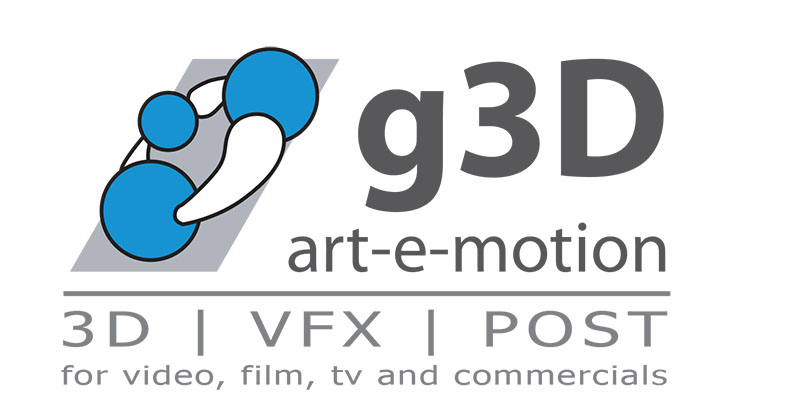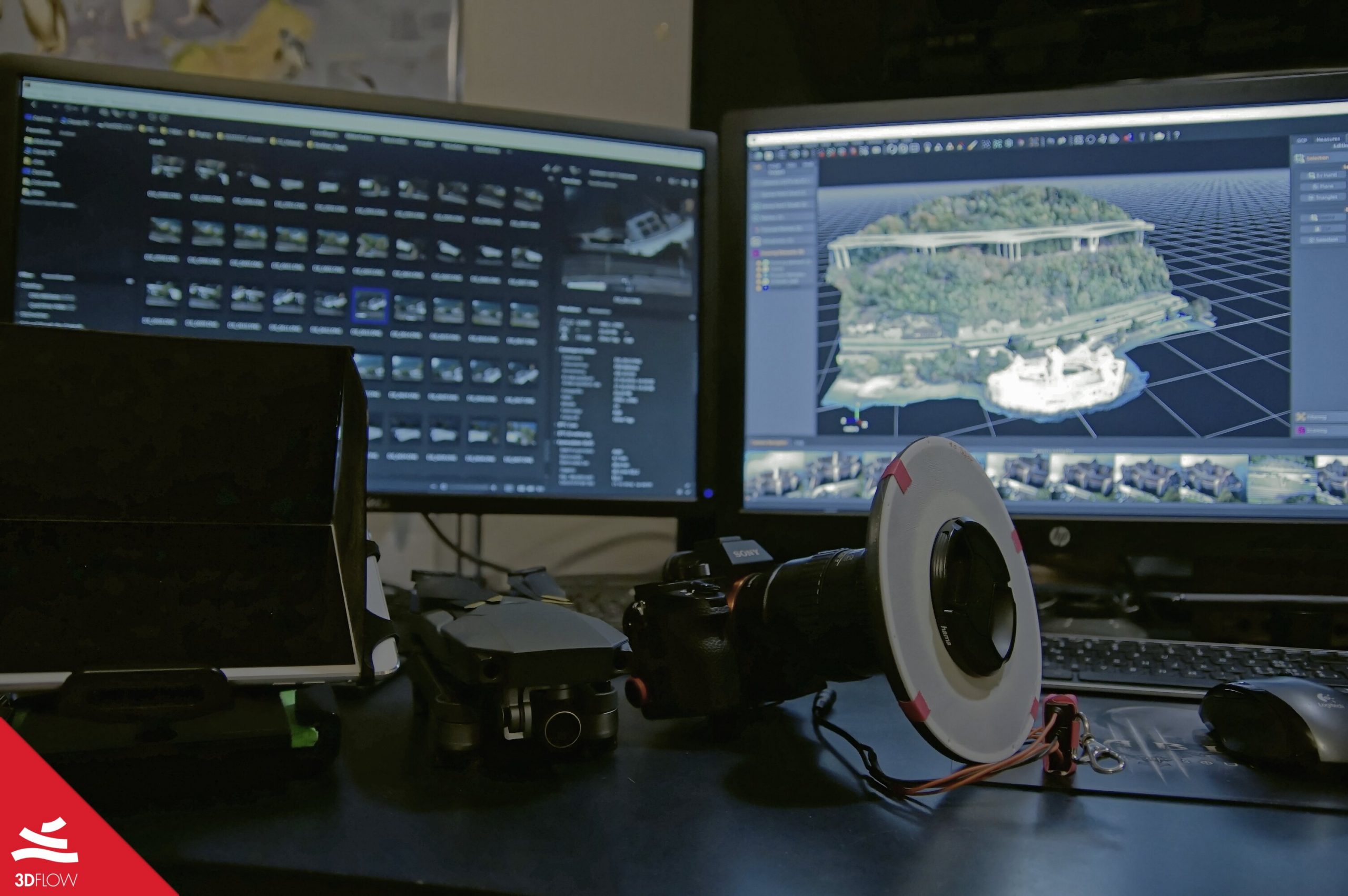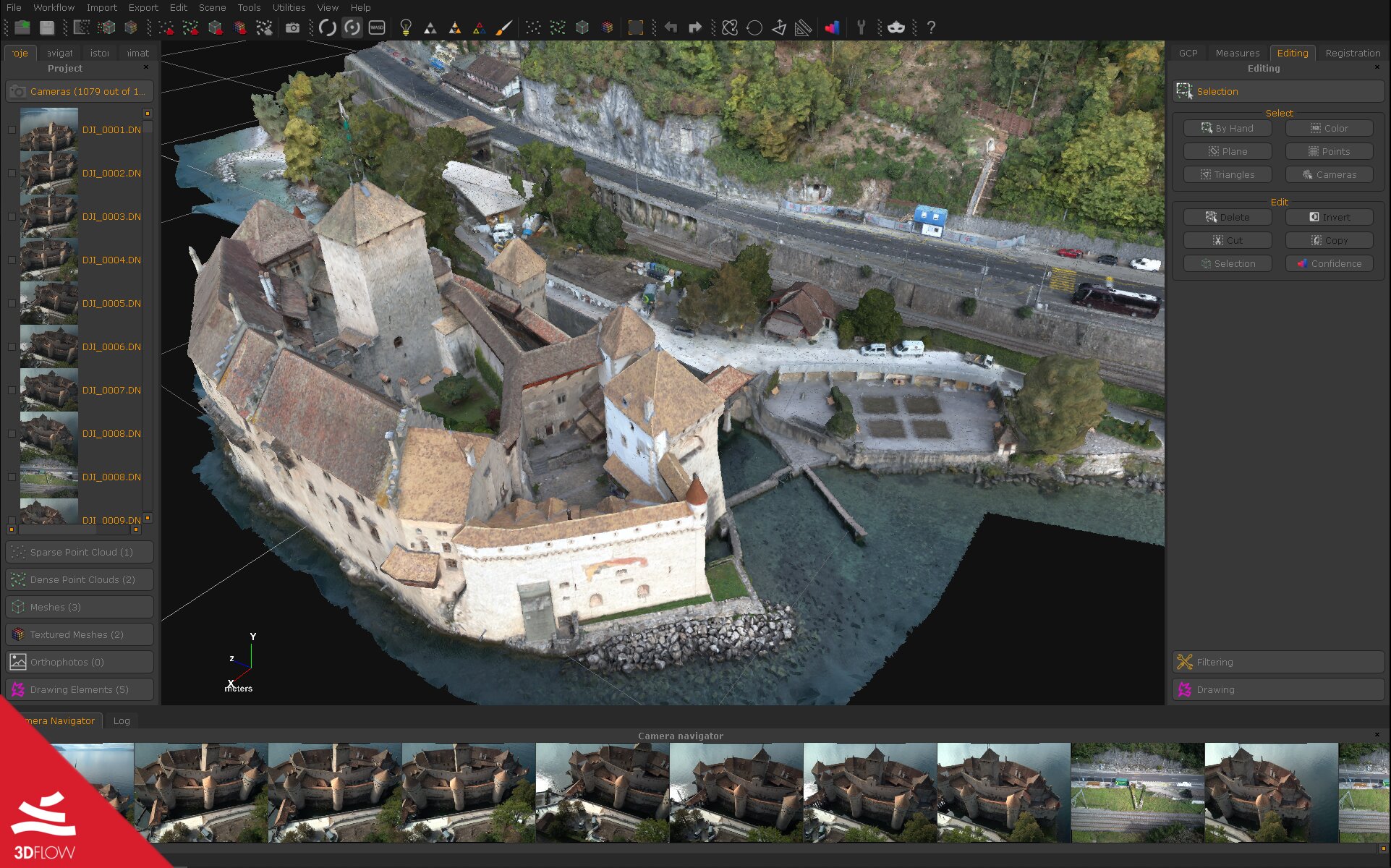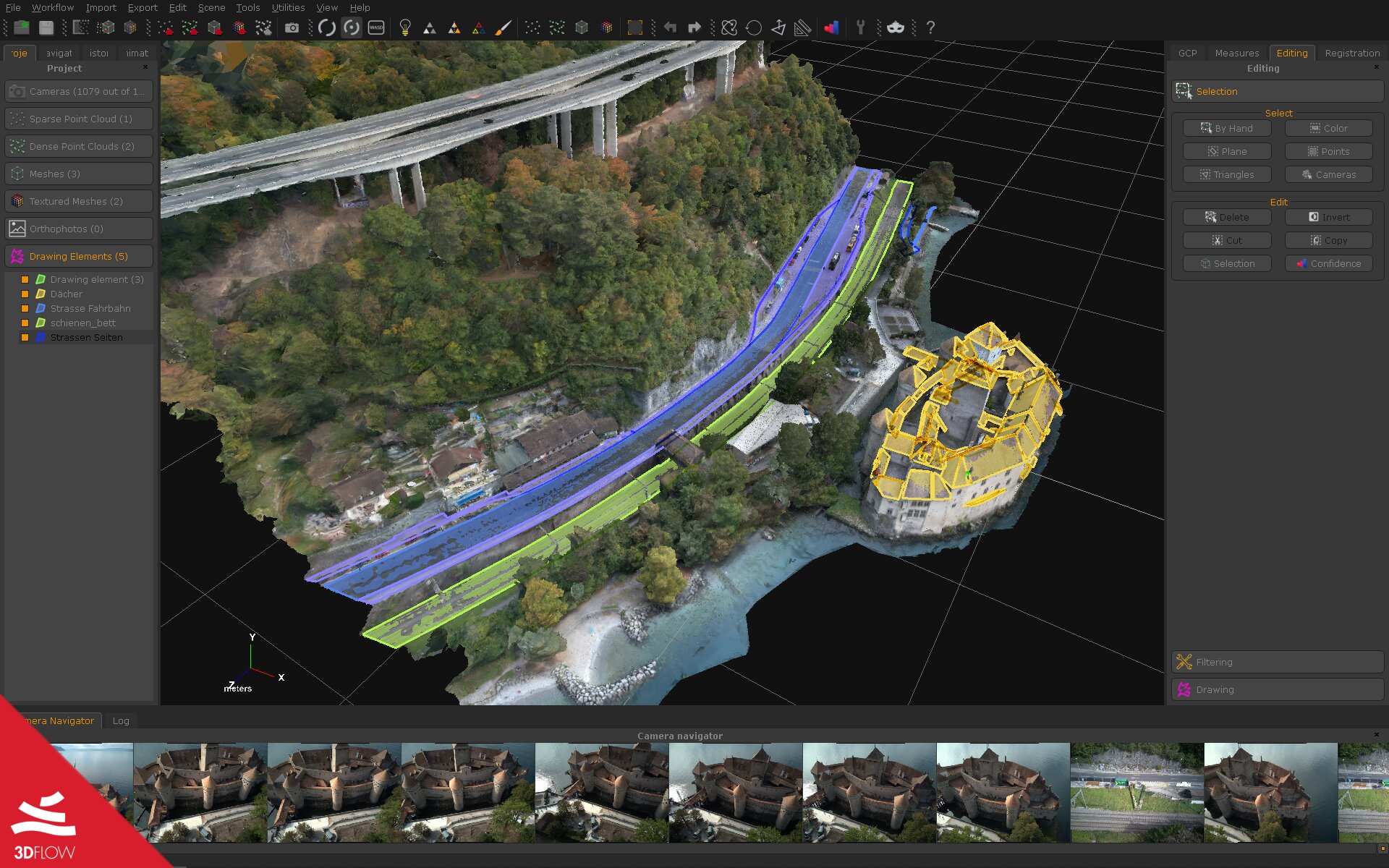The Chillon Castle – Photogrammetry for VR and AR
Virtual Reality, Augmented Reality, Cultural Heritage
All the data collected here have been kindly provided by the digital artist Chris Blaser of g3D art-e-motion, company based in Switzerland.

Area captured and survey goals
Chris is currently working together with Circle Lab GmbH, his partner company, on a new Army museum in the area of Montreux, Switzerland. The project is still under development, as the museum will open the doors in May 2020 in a place called “Fort de Chillon”, which was an artillery defence line from the World War 2 later put out of duty in 2006.
The Fort de Chillon is right above the castle Chillon, the main object of this survey (https://www.chillon.ch/en/): the final purpose is the extraction of a Low Poly version of the castle with normals from the High Poly output. The Low Poly model will be then rendered for Virtual Reality and Realtime Preview, like the example, is shown in the following link: http://photogrammetry.g3d.ch/Chillon_outside/
Survey equipment and data acquired
For the scanning of the castle Chillon and its surrounding area, two different drones were used: a DJI Mavic Pro V1 and a Mavic Air, equipped with a mirrorless camera Sony A7Rii, a Tokina 11-16mm lense with a polarization filter on it, and a custom-made LED light ring in order to allow Cross Polarization (Fig.1). Manual parameters applied to set up the camera were the following ones:
• ISO 800
• Shutter speed 1/300
• Aperture f7.1
They flew using a manual mode with the photo timer set every 5s, recording in RAW PNG with a resolution of 12MP. Each drone took around 500 photos which were later combined with Zephyr Aerial 4.507.

Fig. 1. Equipment used for the survey. © Chris Blaser
Data processing
Once the pictures were imported within 3DF Zephyr Aerial, the Structure from Motion phase managed to orient correctly 1079 photos out of 1099. The workstation exploited to run the processing had the following specifications:
• Processor: Two Intel Xeon E5680
• 128 GB RAM
• M.2 SATA
• GPU: NVIDIA GTX 1080 Ti
The whole reconstruction process took around 26 hours to generate a mesh of about 20 Million points.

Final textured mesh. © Chris Blaser

Drawing Elements on the 3D model. © Chris Blaser


